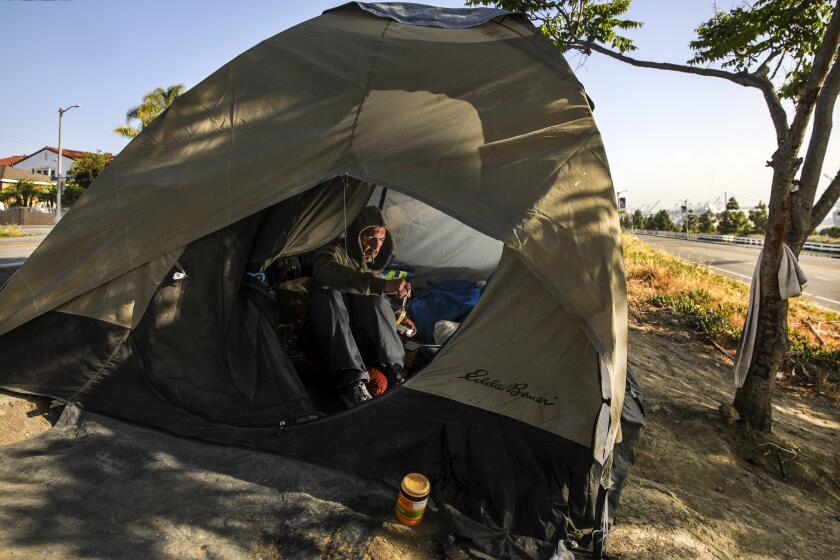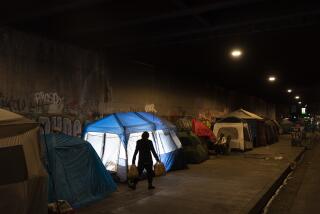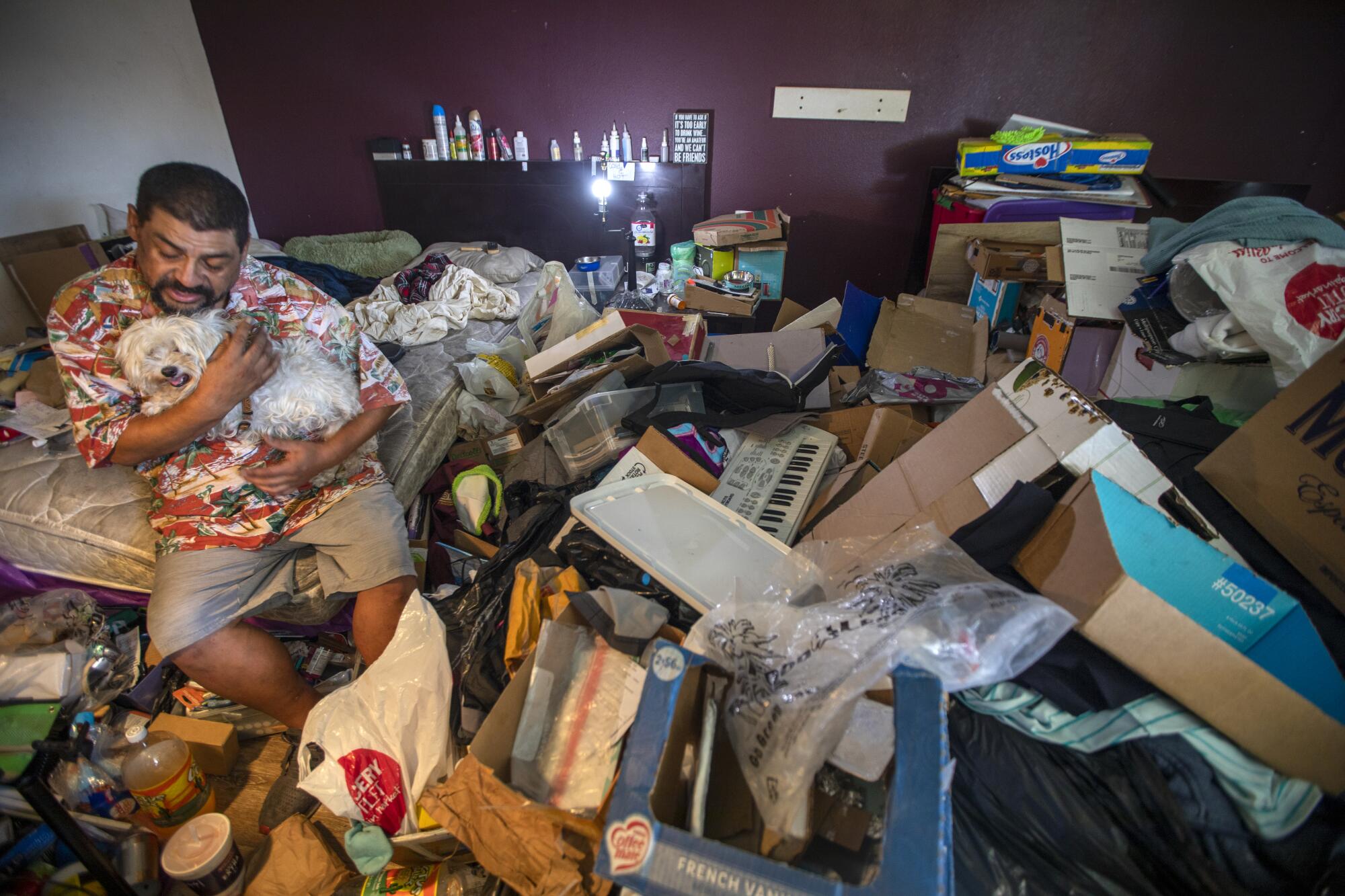
- Share via
In his dim motel room, flies and dust swirled through a slanted blade of sunlight. A shoulder-high heap of boxes, trash bags, electronics and clothes prevented him from opening the curtains.
Mario Blanco, 53, sat at the edge of his bed with his dog, Leo the Lion, staring at the items he’s been hoarding in his room for a year. Empty cups, medication bottles, stacks of paper, old photos, McDonald’s bags, scattered toiletries, dog food cans, a dirty fan.
Blanco was embarrassed by the scene.
“I’ve been throwing away things little by little,” he said.
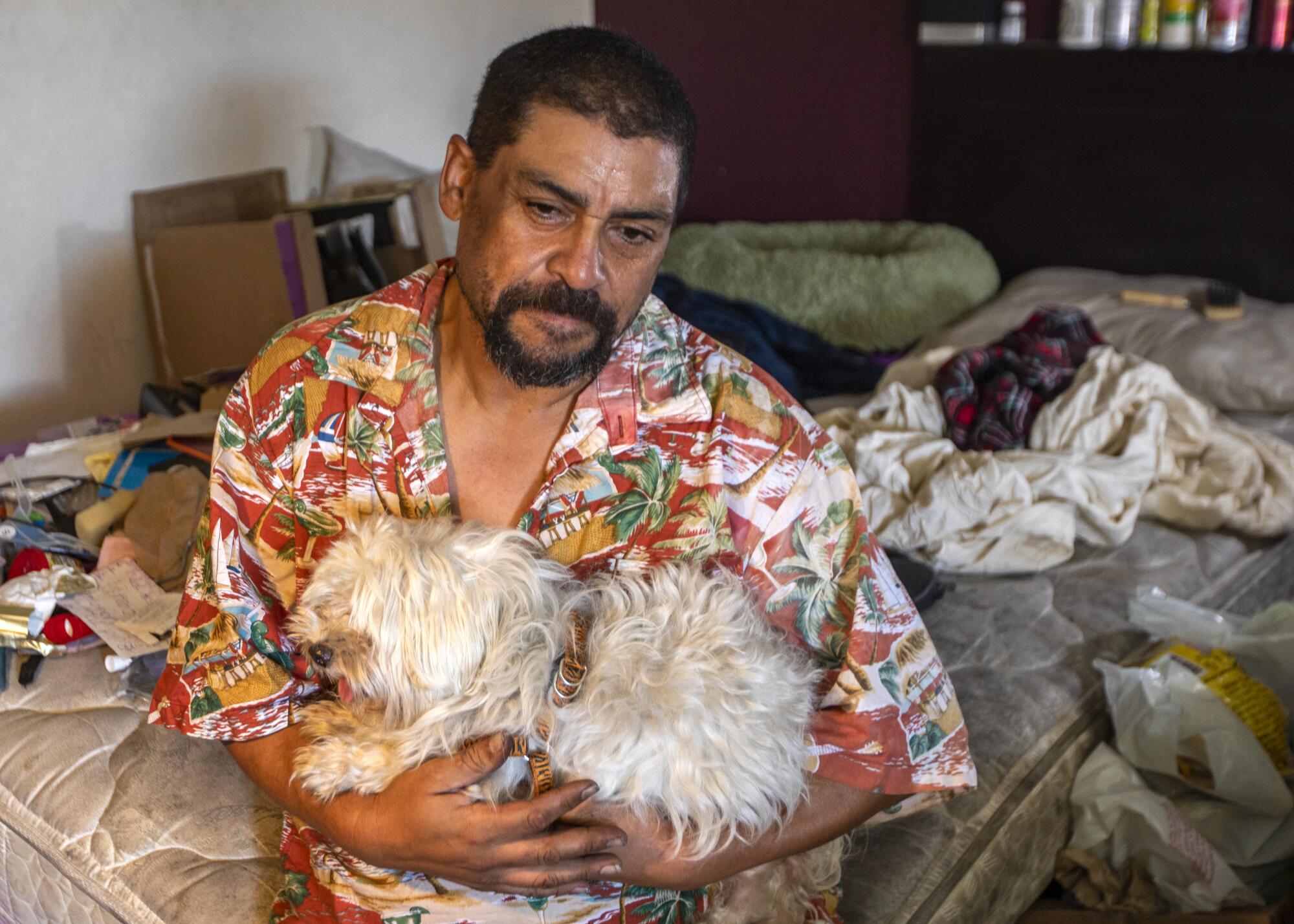
But he was more concerned about what was next.
Blanco and other homeless people sheltering at the Chateau Inn & Suites in Downey had to leave by the end of the day because a motel voucher program that funded their stay had ended. Caseworkers said they had shelter space or rooms at other motels waiting for them.
But for many homeless people, transitioning from place to place is often not simple, and it is even more disruptive and agonizing for those with hoarding disorders, who risk losing all the items they have come to cherish.
Blanco’s eviction from the Chateau Inn would send him on an odyssey to find a new place to live and to get at least some of his possessions back.
“I’m upset,” he said. “Moving is a lot different for a hoarder.”
The end of the voucher program came as Los Angeles County officials have gradually shut down sites of a larger shelter program called Project Roomkey, which was launched at the start of the pandemic to use hotels to minimize the spread of COVID-19 among people living on the streets. The program provided a lifeline for homeless people and gave county officials the chance to place them in permanent housing.
On a strip of dirt called the Gulch, along Gulch Road in San Pedro, homeless people face a city deadline and an uncertain future.
The Los Angeles Homeless Services Authority said it rehoused 21,213 people in 2021. Additionally, the agency said it temporary sheltered 27,701 more people last year through programs like Project Roomkey. Still, hundreds of homeless people returned to the streets by choice or because they were unable to receive long-term housing; the only alternatives were traditional shelters with strict rules that many will not abide.
Blanco certainly cannot bring all of his stuff into a shelter.
Studies have shown that people with hoarding disorders face a higher risk of becoming homeless, particularly when landlords seek evictions over unsanitary conditions in their homes.
“I’m upset. Moving is a lot different for a hoarder.”
— Mario Blanco
Vincent Stephens, a case manager with People Assisting the Homeless, a nonprofit based in Los Angeles, said people with hoarding disorders are some of the most challenging cases to handle.
Stephens, who runs a biweekly support group for hoarders, said those who hoard know they have a problem but struggle to discard things they’ve collected. The shame and fear of being judged may cause people to lie about their living conditions and keep others away. Case managers have a difficult time monitoring hoarders because they have so many other clients to help.
“It’s a balancing act,” Stephens said. “Like spinning several different plates.”
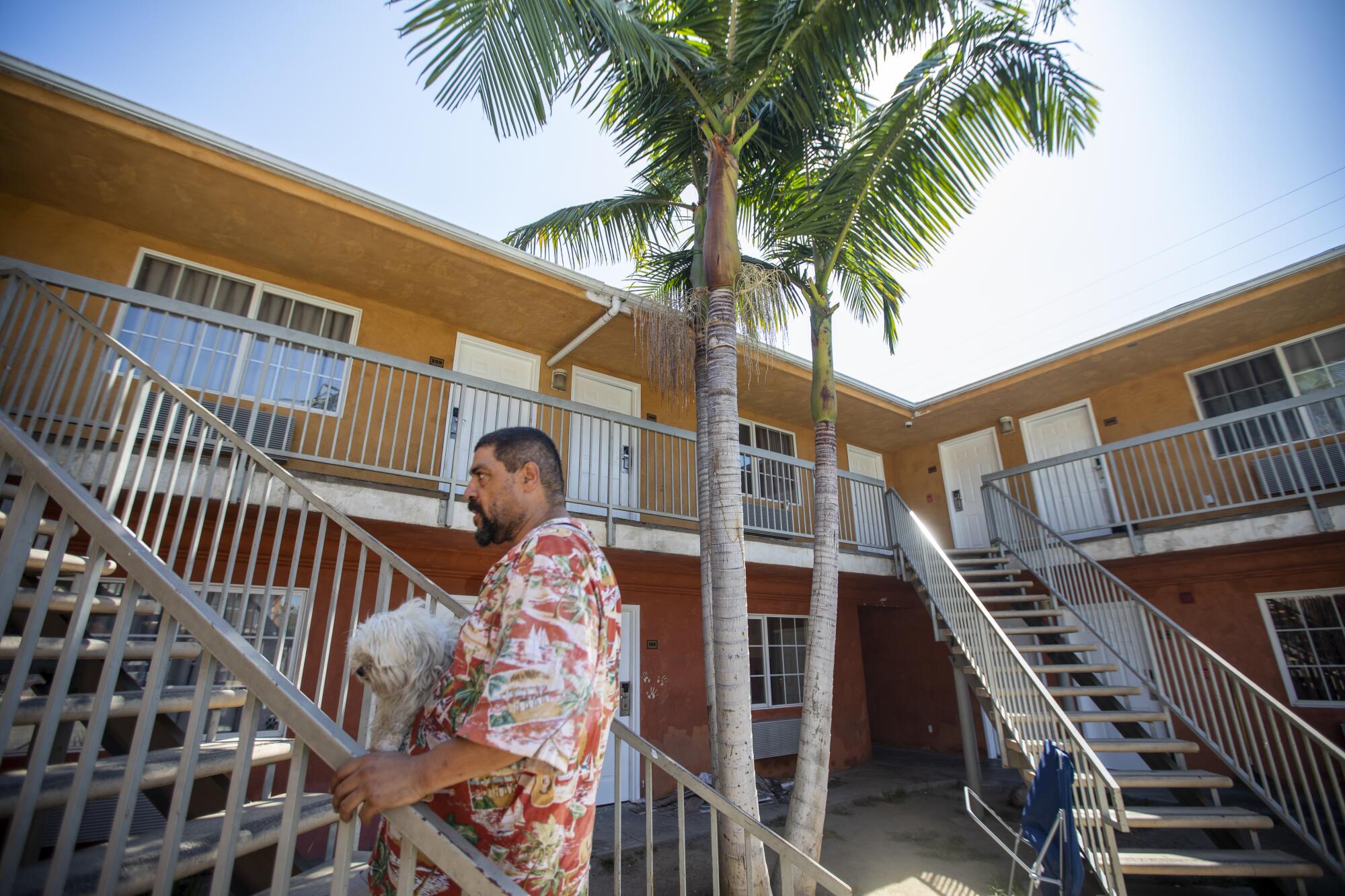
It was 10 a.m., June 30, seven hours before Blanco had to leave.
“The room wasn’t always like this,” he said. “It happened over time.”
It started with crafting, something he has found comfort in since he was a little boy. He wanted to make a cardboard doghouse for Leo, and then cardboard shelves to store shoes, food cans and toiletries.
But Blanco’s mind was prone to shift rapidly to new ideas and items. Everything started piling up.
Blanco said he has a difficult time processing the loss of anything. Many people with the disorder liken throwing things out to losing a limb.
“You lose a part of yourself,” Blanco said. “You’re left with an empty hole and you just feel sadness.”
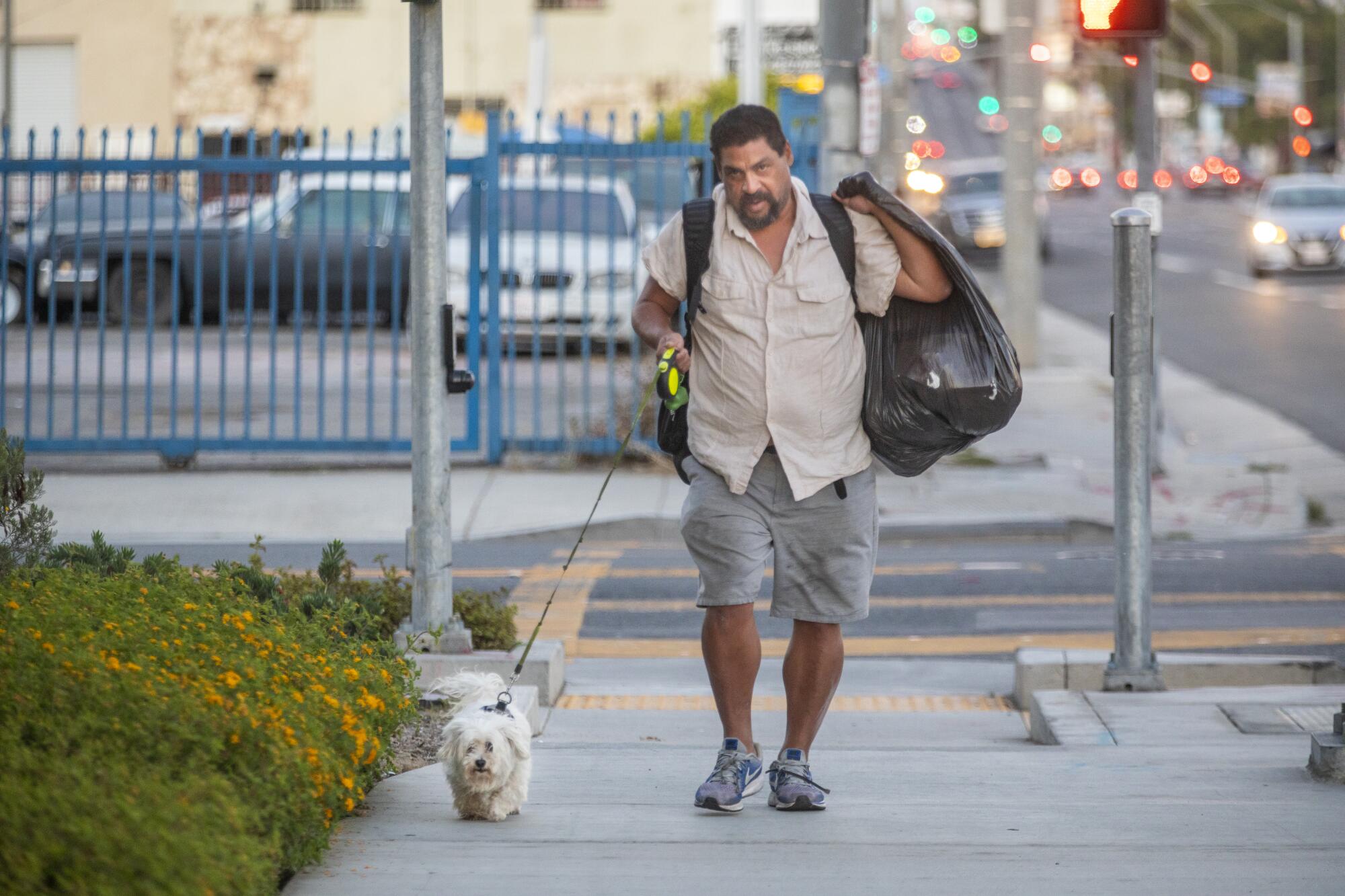
He knows there’s no value in what he’s collected but parting ways with just one piece of cardboard requires a ritual that he touch every little section of it.
Blanco believes his hoarding disorder may have developed when he was a child and worsened with each hardship he faced.
He grew up in Long Beach, and his parents sometimes had knock-down fights that terrified him before their divorce. And Blanco was often hospitalized for hernias. Before surgeries, he found comfort by chewing on paper and focusing on arts-and-crafts projects.
He said he has long struggled with processing information, making basic tasks like reading and writing difficult. In school, he plagiarized and tried to memorize lectures to keep up. At 16, he dropped out and began working full time.
Two years later, in the fall of 1988, Blanco’s 24-year-old brother was killed. He said someone was playing around with a gun and accidentally shot him in the head.
That following spring, a gang shooting occurred outside of his mother’s home. Blanco said as people fled, he rushed out to help 16-year-old Shandra Balcom after a bullet struck her in the head. He said he held her in his arms until paramedics arrived. Balcom died days later, according to news reports at the time.
“When my brother was shot, he was left alone to bleed to death,” he said, crying. “That’s why I went to help her.”
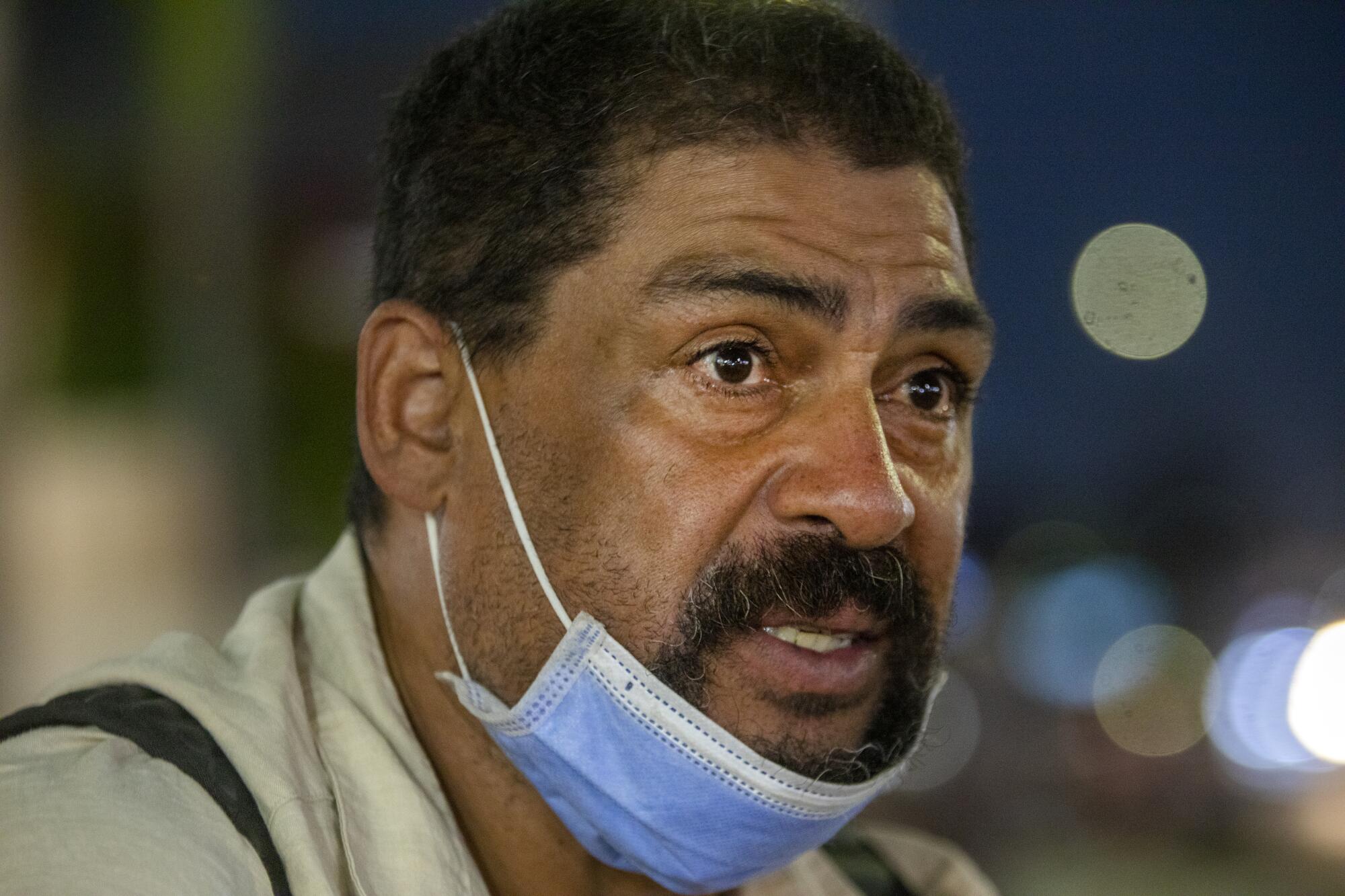
Blanco never processed the losses. The grief got tangled up with the shame he had long carried about his learning disability, with the anger over his parents’ fights. He used alcohol to cope and his hoarding disorder grew more pronounced.
He cycled through good spells and prolonged benders. He got married, and his wife and stepdaughter helped him keep his addiction and hoarding under some control. But he fell to pieces when his mom died from diabetes in 2014. He drank heavily, his wife left him and the clutter mounted.
He managed to sober up and focus on his longtime job as a campus security guard for the Long Beach Unified School District, earning about $35,000 a year.
But with rents rising, by November 2019, he couldn’t afford to keep his apartment. He left and rented a cheap hotel room until he ran out of money and turned to Catholic Charities in Long Beach for help. Despite not having a traditional home setting, Blanco continued working for the district, until the pandemic closed schools in 2020. He didn’t file for unemployment in part because he found it difficult to read and fill out the necessary forms.
He found a room through Project Roomkey at a hotel in San Pedro. When schools opened in 2021, he got his job back and drove his sunbeaten, 22-year-old Saturn across the port bridges to Long Beach. When funding ended for the San Pedro hotel that July, he told his caseworker with First to Serve Inc., the homeless services provider helping him, that he needed to stay close to Long Beach so that he could keep working.
Instead, he was sent 15 miles north to the Chateau Inn & Suites. He couldn’t afford the gas for the commute.
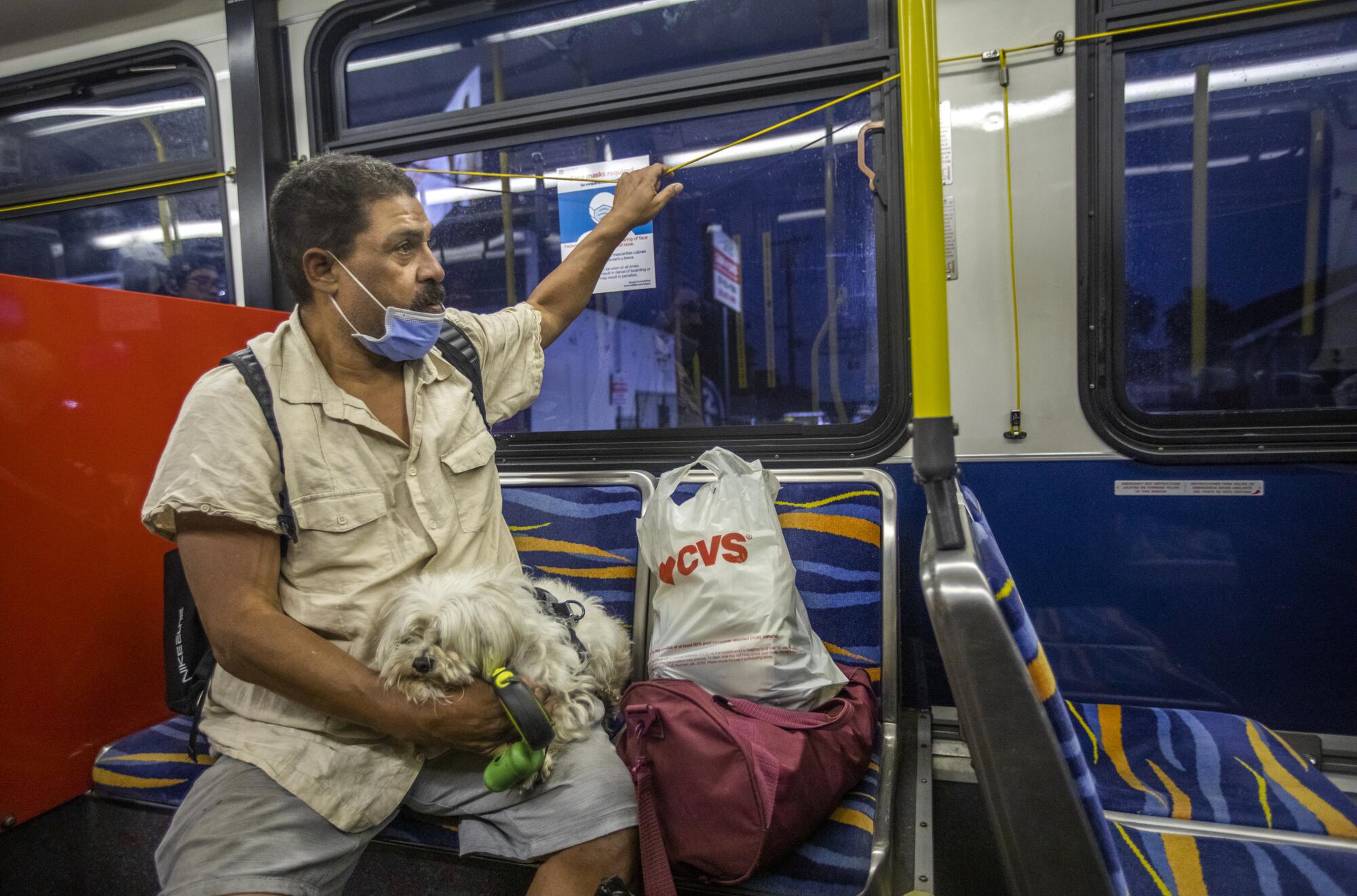
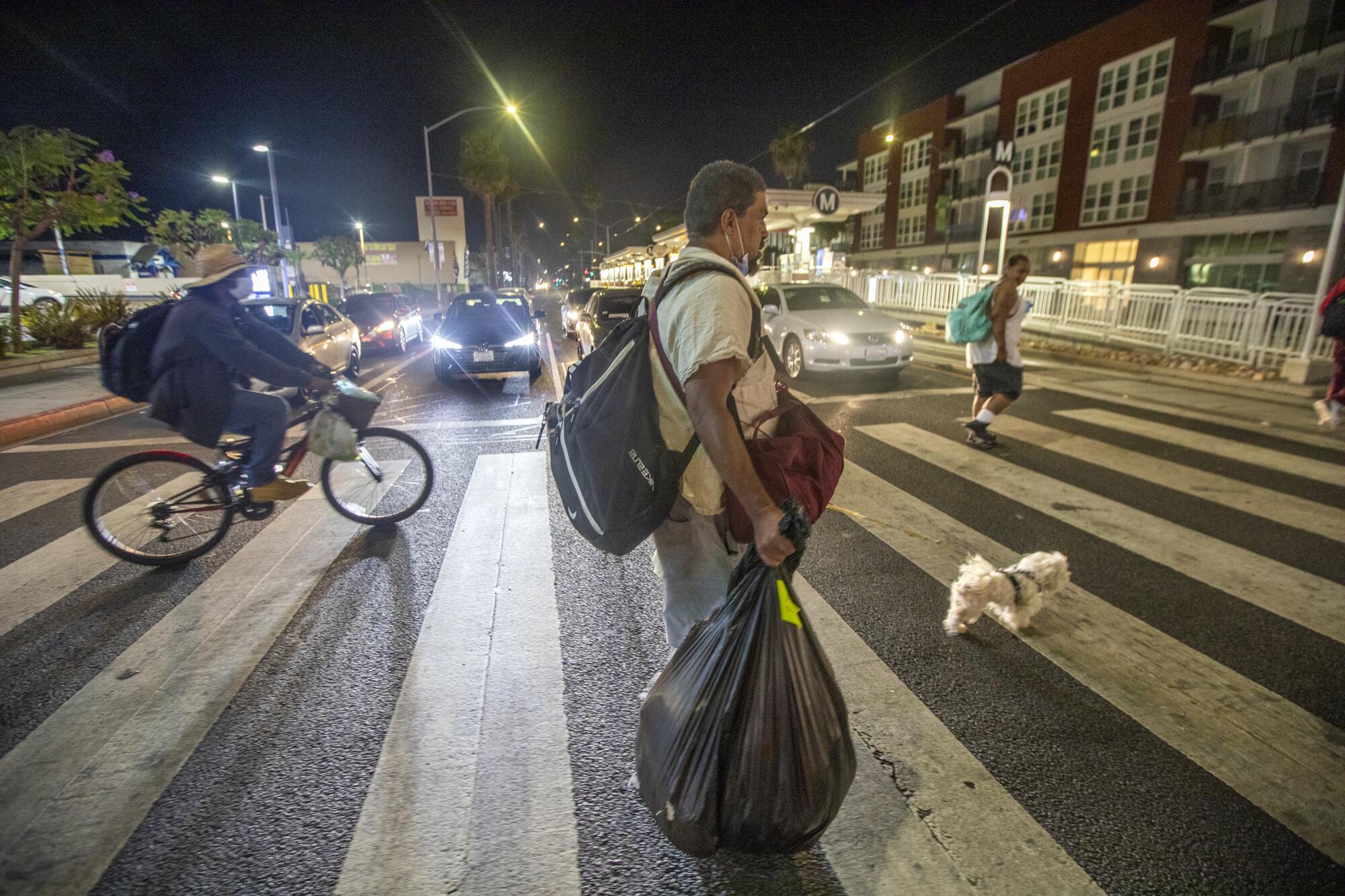
“I sold some electronics just to get gas money,” he said. “There were times when I’d run out of gas and had to borrow money from co-workers.”
He said his first caseworker helped secure food and a $100 gas card for him, but after that, he couldn’t pay for fuel and took the bus. Blanco said he eventually lost his job because he kept showing up late to work.
As the morning hours rolled on June 30, Blanco sat on his bed, overwhelmed about packing. Stress gnawed at his stomach at the thought of sorting through the piles of items, most of which would probably be tossed.
“I have to process things and right now all of this is chaos in my head,” he said.
Outside, his Saturn sat under the sun, with expired tags, a cracked windshield and a missing left fender. The car’s battery had been stolen weeks before, and Blanco had to sell it to a junk yard.
When First to Serve caseworkers came to the motel that afternoon, Blanco said, they ushered him from his room and refused to let him back in. He said they also packed his bags with what they deemed important and placed them in a shopping cart for him to take. The organization told The Times it could not speak about individual cases due to privacy rights but said caseworkers do their best to meet the needs of every client.
At the end of moving day, one tenant was placed at an apartment under a rental assistance program in Los Angeles. Another was placed in Project Homekey in Los Angeles, a long-term hotel program. Blanco was told to go to the Coral Motel in Buena Park, about 13 miles east of Long Beach.
When he arrived at the motel, the manager said there was no room for him.
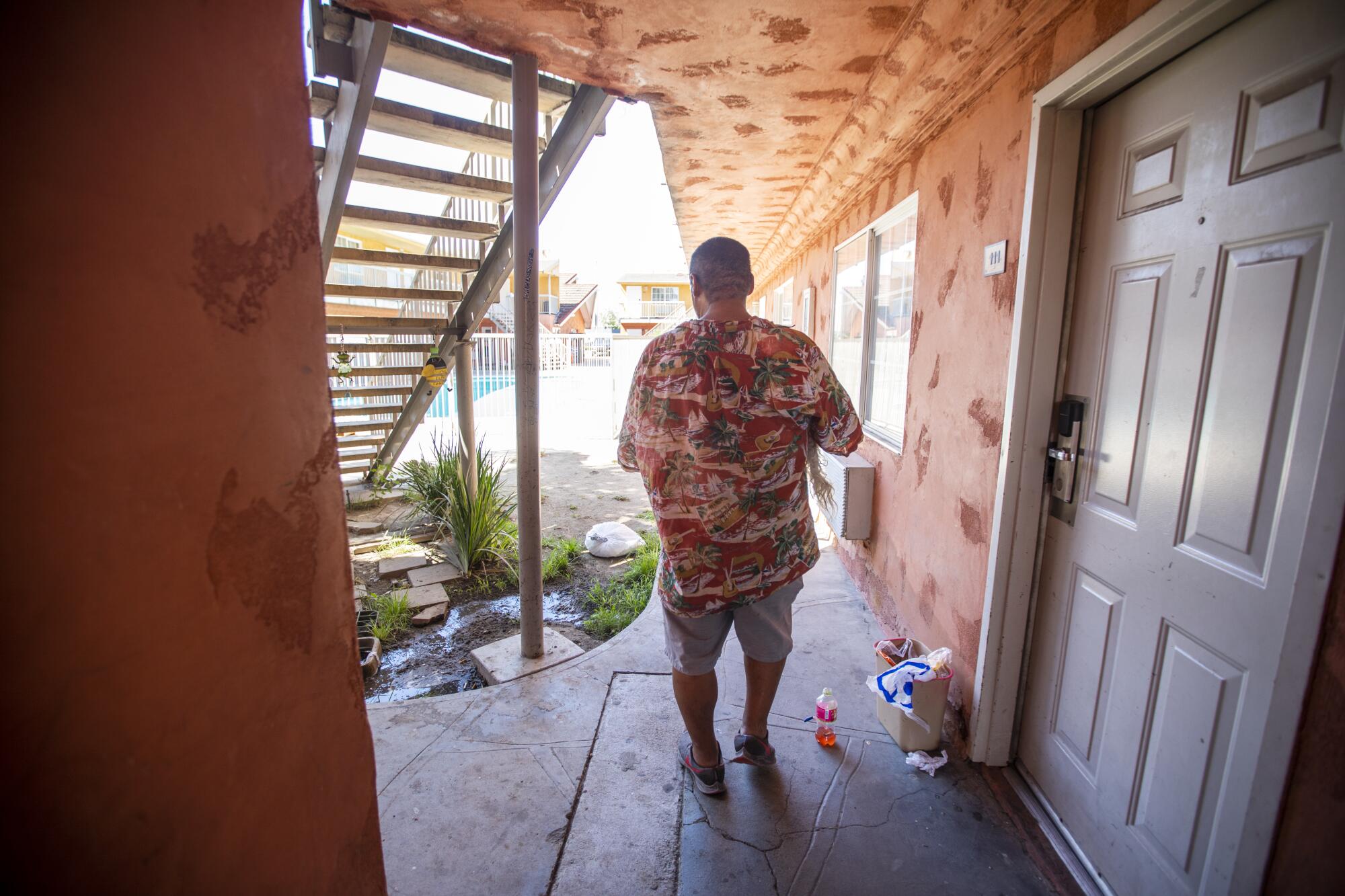
“I told [the manager] I was sent here by First to Serve and he’s looking at me like he has no idea what I’m talking about.”
After a back-and-forth discussion, the manager told him to come back later.
Blanco said he took a Lyft back to Downey because his stuff was still there. The rides slowly ate away at the last $300 he had earned.
At the Chateau Inn he called police to file a report because he wanted to have documentation that his property was still there. Unable to stay with this things, he returned to Buena Park hoping that the hotel manager by then had been told about his stay.
“First to Serve told me they would have a room for me, so I didn’t worry,” he said. “I didn’t think about grabbing much when I left because I thought they would send a U-Haul to pick my things up.”
But there was no room for him. Blanco found himself pushing a laundry cart with a backpack and plastic bags filled with shirts, a pair of pants, mismatched socks, documents and one medication. He took a Lyft to two more motels. Again, no vacancies.

“I think they saw me walk up with a shopping cart and Leo and decided they didn’t want me,” he said. “It was embarrassing.”
In the car, he vented to the Lyft driver.
“I was telling her about my day and that I was homeless,” he said. “And she tells me she was homeless too and was staying at a Motel 6 with her husband and four dogs.”
The Lyft driver drove him to a Motel 6 in Artesia. It was 3 a.m. Friday when he arrived. He said he paid $130 for a room.
The journey had left him exhausted and angry.
“How do you send me to Buena Park, a place I’m not familiar with, and leave me there?” he said.

The next morning, without enough cash for another night, he left. For days, Blanco slept next to a car wash in Downey and by an outflow drain along the San Gabriel River, the first time in his life he had slept outdoors. He drank tap water when he ran out of food. He said a homeless man was kind enough to buy him Chinese food.
He texted his caseworkers desperately trying to at least get his family photos from the Chateau Inn. They told him the room was too unsanitary, and they threw everything out.
“The only thing of importance were my photos, my brother’s yearbook,” he said, tearing up.
Blanco spent days without his medications for high blood pressure, Type 2 diabetes and depression. He used what little money he had left to purchase medical supplies to keep a surgical hole from a hernia operation clean. He said the stitches had come apart a long time ago but he’s never had time to get treatment for it.
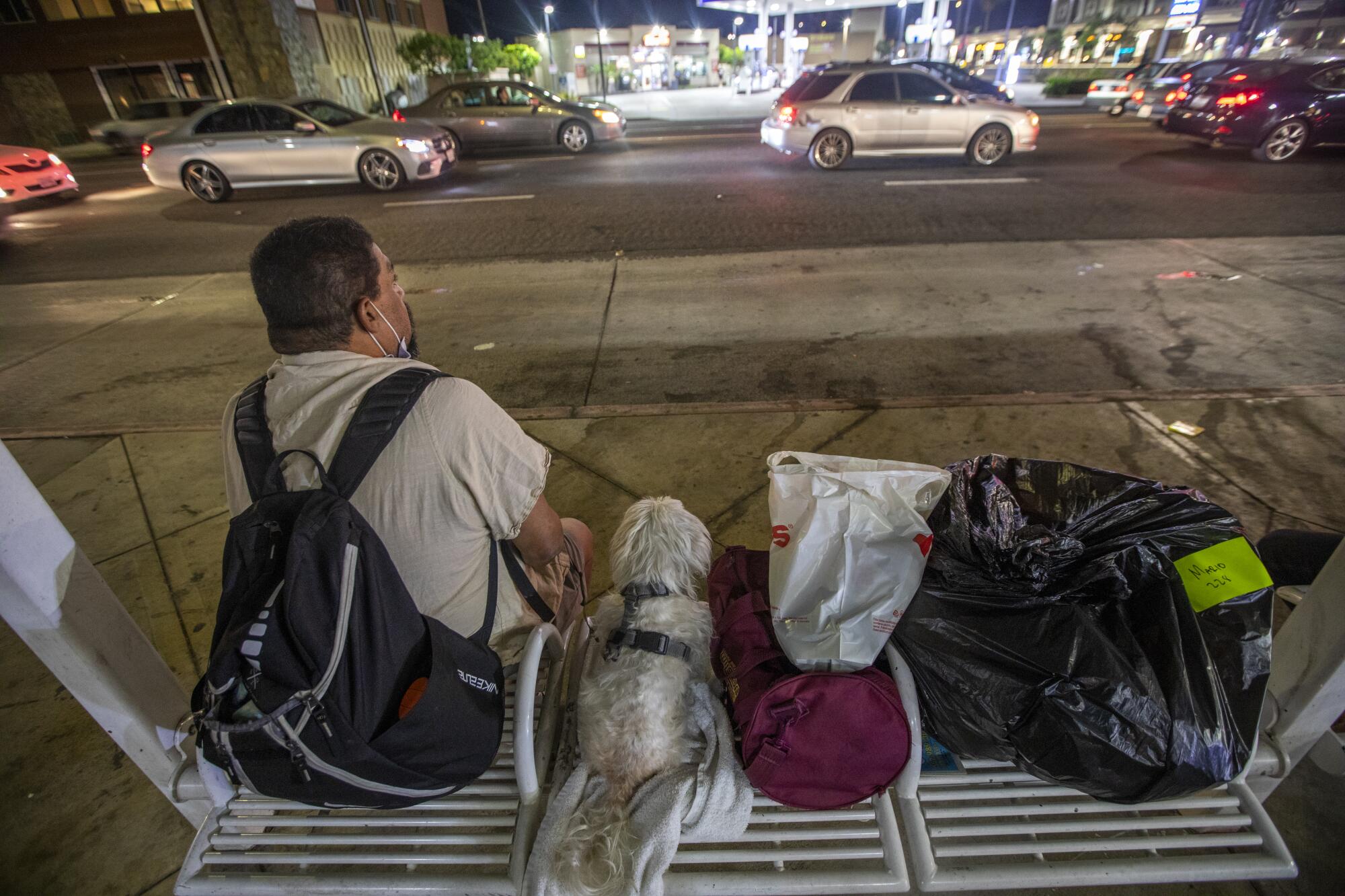
Sitting at a park in Downey on July 5, holding Leo, he said that he recognized his hoarding was a problem but that he didn’t deserve the treatment he received from First to Serve Inc., which he said dropped him as a client shortly after moving him out of the Chateau Inn.
He stayed up all night and slept during the morning daylight hours because of the mosquitoes and the fear that he’d get robbed or that a coyote would take Leo from his arms.
“This is all scary stuff,” he said.
That Saturday morning he walked into a homeless services center in Long Beach. They placed him in a Project Roomkey site but then told him to leave the following Wednesday, July 13, when he failed to keep an appointment.
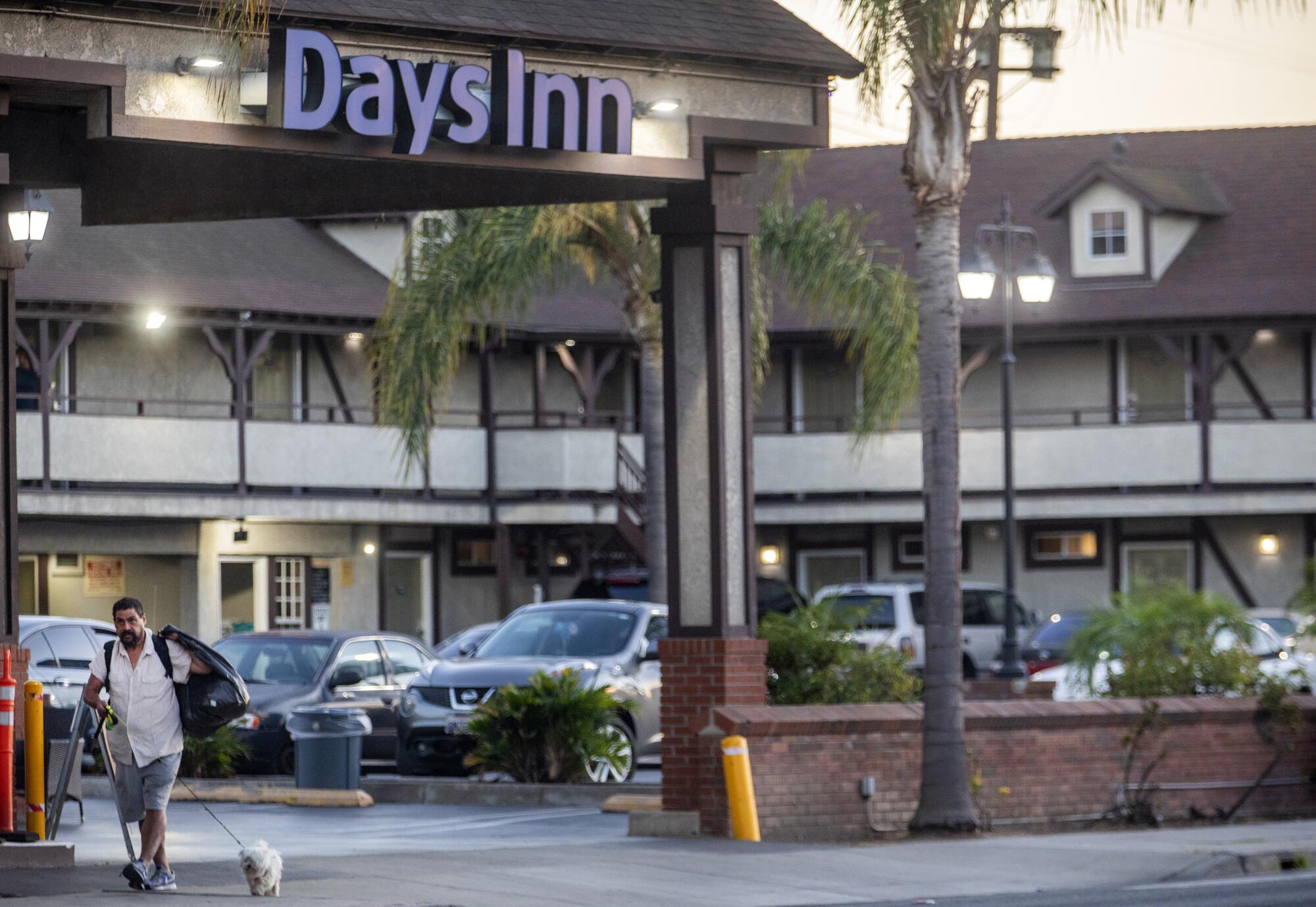
He had overslept because his phone wasn’t working, and he didn’t know missing one appointment would put him back on the streets.
As night fell, Blanco decided to go to St. Mary Medical Center in Long Beach. He would get treatment for the hernia wound and maybe they could look at his feet, now full of blisters, which can cause dangerous infections for a diabetic. He said by then, morning would come and he could go to the homeless services center.
Waiting outside the emergency room entrance, he placed a blanket down for Leo. He petted him and told him he was a good boy.
When a nurse called Blanco’s name, he put his backpack on, balanced a red duffle bag on his right shoulder, grabbed a white plastic bag and Leo’s leash with his left hand, a black plastic bag with the right, and slowly made his way inside.
The next night he slept outside of a Rite Aid in San Pedro, where cockroaches skittered around him. He has been on the streets most nights ever since.
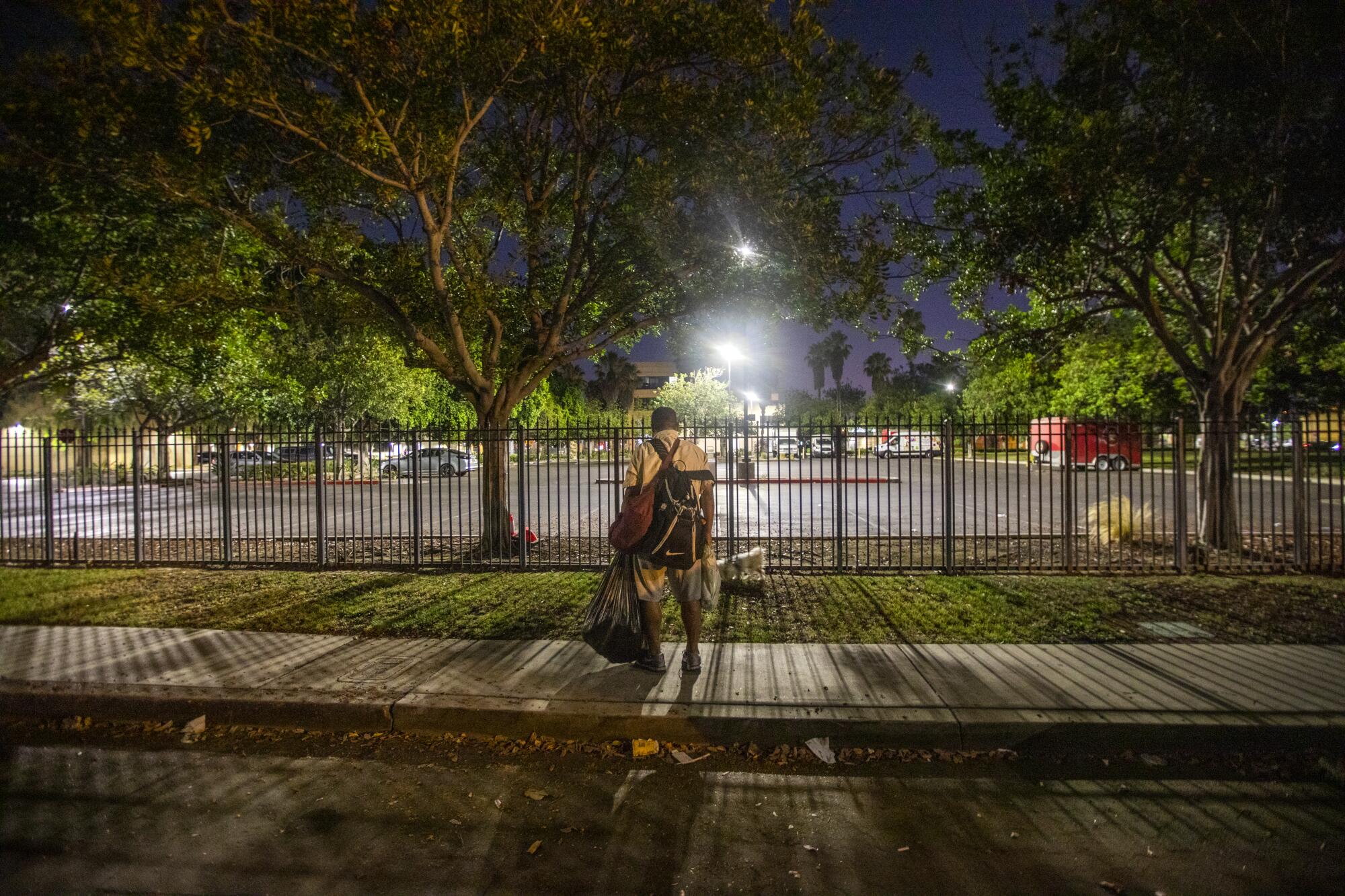
More to Read
Sign up for Essential California
The most important California stories and recommendations in your inbox every morning.
You may occasionally receive promotional content from the Los Angeles Times.
